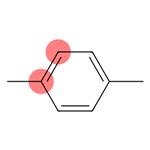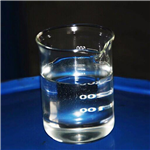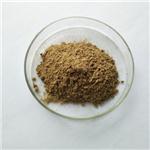
Xylene
- Product NameXylene
- CAS1330-20-7
- CBNumberCB0130912
- MFC8H10
- MW106.17
- EINECS215-535-7
- MDL NumberMFCD00077264
- MOL File1330-20-7.mol
- MSDS FileSDS
Chemical Properties
| Melting point | -34 °C |
| Boiling point | 137-140 °C (lit.) |
| Density | 0.86 g/mL at 25 °C (lit.) |
| vapor density | 3.7 (vs air) |
| vapor pressure | 18 mm Hg ( 37.7 °C) |
| refractive index | n |
| Flash point | 77 °F(lit.) |
| storage temp. | Flammables area |
| solubility | Chloroform (Soluble), Methanol (Slightly) |
| form | Liquid |
| color | APHA: ≤10 |
| Odor | char. sweet odor |
| Viscosity | 0.74mm2/s |
| explosive limit | 7% |
| Water Solubility | <0.1 g/L (20 ºC) |
| Merck | 14,10081 |
| BRN | 1901563 |
| Exposure limits | ACGIH: TWA 100 ppm; STEL 150 ppm OSHA: TWA 100 ppm(435 mg/m3) |
Safety
| Symbol(GHS) |
  
|
|||||||||
| Signal word | Danger | |||||||||
| Hazard statements | H226-H304-H312+H332-H315-H319-H335-H373-H412 | |||||||||
| Precautionary statements | P210-P273-P280-P301+P310-P303+P361+P353-P331 | |||||||||
| Hazard Codes | Xn,F | |||||||||
| Risk Statements | 10-20/21-38-36/38-65-48/20 | |||||||||
| Safety Statements | 25-36/37-62 | |||||||||
| RIDADR | UN 1307 3/PG 3 | |||||||||
| OEB | A | |||||||||
| OEL | TWA: 100.0 ppm; 435.0 mg/m3, STEL: 150.0 ppm; 655.0 mg/m3 | |||||||||
| WGK Germany | 2 | |||||||||
| RTECS | ZE2100000 | |||||||||
| Autoignition Temperature | 867 °F | |||||||||
| TSCA | Yes | |||||||||
| HazardClass | 3 | |||||||||
| PackingGroup | II | |||||||||
| HS Code | 29024400 | |||||||||
| Hazardous Substances Data | 1330-20-7(Hazardous Substances Data) | |||||||||
| Toxicity | LD50 oral in rat: 4300mg/kg | |||||||||
| NFPA 704: |
|


